Prepping can be an overwhelming task. Since you are preparing for disasters and emergencies, it’s natural to feel the need to buy every supply on your list. This can mean spending tons of money and burning holes in your wallet. Fortunately, with the right tips, it’s possible to prep on a budget.
You can doomsday prep by making a plan first and taking inventory of what you already have. Start with the basics, like your food, water, and shelter. Practicing survival skills can also help.
To know more about how you can do those things and more, continue reading the guide below.
Quick Navigation
- Start by Making a Plan
- Know Your Priorities
- Build Small Habits
- Learn Basic Survival Skills
- Always Update
- Stay In Shape
- In Conclusion
Start by Making a Plan

Emergency preparedness starts with a good plan. This ensures that you stay on track-from buying your first aid supplies to honing your survival skills.
For this phase, there are two things you need to do.
Create a Budget
Since you are prepping on a budget, it helps to set a certain amount you can put into prepping. This allows you to spend your money on things you actually need to be prepared for anything.
Consider this:
With a limited budget, you can’t spend thousands of dollars on a generator and have no budget for food or even water. It’s just not practical.
When you decide how much money you can put into prepping, you’ll be able to determine the most important items. And as a result, there’ll no unnecessary purchases while you’re completing your prepping essentials.
So, how much does doomsday prepping cost?
Well, there’s no solid rule when it comes to setting a budget for prepping. It will greatly depend on your monthly income and the percentage of it you’d like to use for prepping.
If you’re not sure where to start, 5% of your real income would be nice.
Do an Inventory
Once you’re able to set your budget, it’s time to take a closer look at the items you already have at home. This eliminates the chance of buying something you already have at home.
When you do your inventory, you can create a list. Take note of how many canned goods you already have in your pantry before you start prepping. If you already have a first aid kit, it’s a good idea to list down everything you have in it. This way, you won’t find yourself buying something you already have. In essence, it’ll help you save money and cut down on any unnecessary purchases.
Know Your Priorities
When you’re prepping, it’s normal to feel the need to have everything. Since there’s no telling when disaster will strike or how long you’ll need to be away from home, you’d want to make sure you have everything you need to survive without going over your prepping budget.
But when your budget is limited, that may be challenging. That’s why you need to know your priorities. If you don’t know what they are, you can start with the basics.
Consider this:
A person can only survive without water for around three days. Without food, a person could survive between one to two months.
Of course, there are different factors that can influence those numbers. However, knowing them can help you prepare for those critical times.
Food
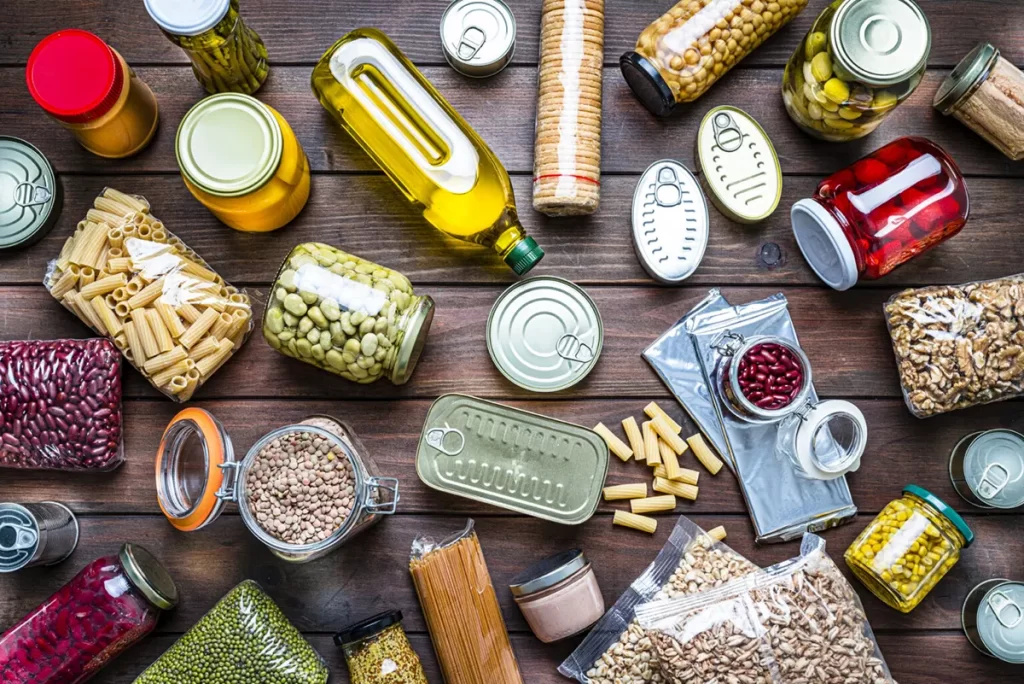
It’s always a good idea to stock non-perishable items, since they have longer expiration dates. You can keep them away for long periods without worrying about them spoiling early.
However, this doesn’t mean that you can fill your bug-out bag with chips and other junk foods. Remember, when in survival mode, you should prioritize nutrition over flavors and preferences.
You can start by stockpiling the following items:
Canned Chicken, Salmon, and Tuna
These items are good to store for prepping since they can last about two years. Plus, they’re a good source of protein when you’re in survival mode.
While it’s not necessary for you to buy canned ones, they’re a good option since they have fewer chances of getting squished in your bug out bag.
However, if you worry about them being too heavy or bulky, you can get vacuum-packed pouches. Just take note that they have a shorter lifespan of 6 months.
Canned Vegetable
Protein isn’t the only thing you have to worry about when it comes to nutrition. You’ll also need a good source of essential nutrients with a long shelf life.
Growing your own food and starting your own garden are better choices, but they’re not always practical. If a disaster forces you out of your home, you’ll need a good source of nutrition.
Pack cans of carrots, peas, corn, and beans into your bug-out bag. If you worry about cooking, you can pack canned soups and chili. These can be eaten straight out of the can.
Peanut Butter
This is a great source of energy. You can get lots of protein and healthy fats from it too. Plus, it’s cheap.
Now, if you are preparing with a group, it’s a good idea to pick peanut butter that’s gluten-free and vegan-friendly. This helps make sure that you’re able to serve it to people with different needs.
Trail Mixes and Nuts
These are convenient to have when you find yourself caught in an emergency or a disaster. They’re healthy and awesome source of energy.
Just remember to pick the ones that come in vacuum-packed containers. That way, the nuts won’t lose their freshness easily.
Power Bars and Granola Bars
These are filling since they’re packed with good amounts of carbohydrates. They also stay fresh for a good amount of time. In general, these food bars can last for around six months.
Whole Wheat Crackers
You won’t always have the time and resources to make sandwiches during an emergency. For that, it’s a good idea to have whole-wheat crackers in your bag.
They may have a shorter shelf life, but the extra fiber they have makes up for it. You’ll find them really filling when you’re hungry.
Water
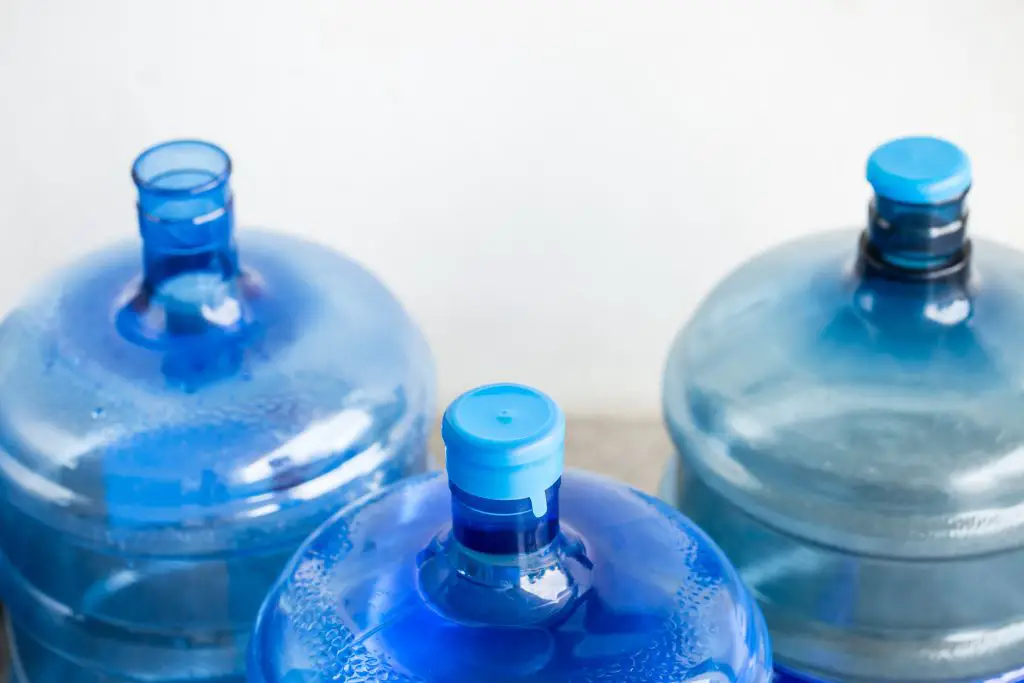
Now, how much water should you put in an emergency preparedness bag?
According to the CDC, you’ll need to store about 1 gallon (3.79 liters) of water for each person for about three days. This amount of water should be enough for both drinking and sanitation.
Now, realistically, a lot of people use much more water than that. So, to be truly and fully prepared, try to store around 60 to 120 gallons (0.45 cubic meters) of water for each person in your household. This should give you about 2 to 4 gallons (15.14 l) of water for a month, or at least 30 days.
Since there’s no telling how long an emergency or disaster will last, it’s a good idea to make water conservation an essential part of your preparedness plan. This will help your supply last.
For example, you can use hand sanitizer to clean your hands and prevent the spread of diseases. Of course, handwashing is still the best way, but you can’t always use water to get rid of the bacteria on your hands.
If you’re worried about running out of drinking water or bottled water, consider getting a portable water filter and water purification tablets as part of your emergency supplies. These items are also great to have when you’re in doubt of the safety of the tap water in the area.
You should also consider gray water recycling. Save your gray water in a separate water storage and use it to flush your toilet. You can even use it to water your garden, as long as you know what goes into your gray water. Ideally, there shouldn’t be any harmful chemicals if you plan to use it to water your plants.
If you can’t use gray water, try using waterless toilets. You can consider composting toilets or even a two-bucket emergency toilet.
Clothing

When it comes to clothes, you should forget about looking your best. This means forgetting your favorite color or what’s trendy. Instead, purchase only the essentials.
As much as possible, avoid picking skinny and stretchy outfits. And as practical as it sounds, you should avoid grabbing items from your closet that you don’t wear anymore. If you’ve never worn them in the last couple of years, there’s a good chance that those clothes don’t fit you anymore.
When picking items, it’s a good idea to focus on the clothes’ comfort, durability, and breathability. It’s also helpful to stick with minimalism when choosing your doomsday clothes.
As a guide, consider including the following item in your doomsday preparation:
- Short and long sleeves shirts
- Socks that go up the knees
- A pair of warm gloves
- Wool beanie hat
- A pair of heavy boots
- Shemagh
- Undershirts
- Mixed wool and cotton underwear
- Balaclava
- Leggings
- Trousers
- Light Sweater
Hygiene Items
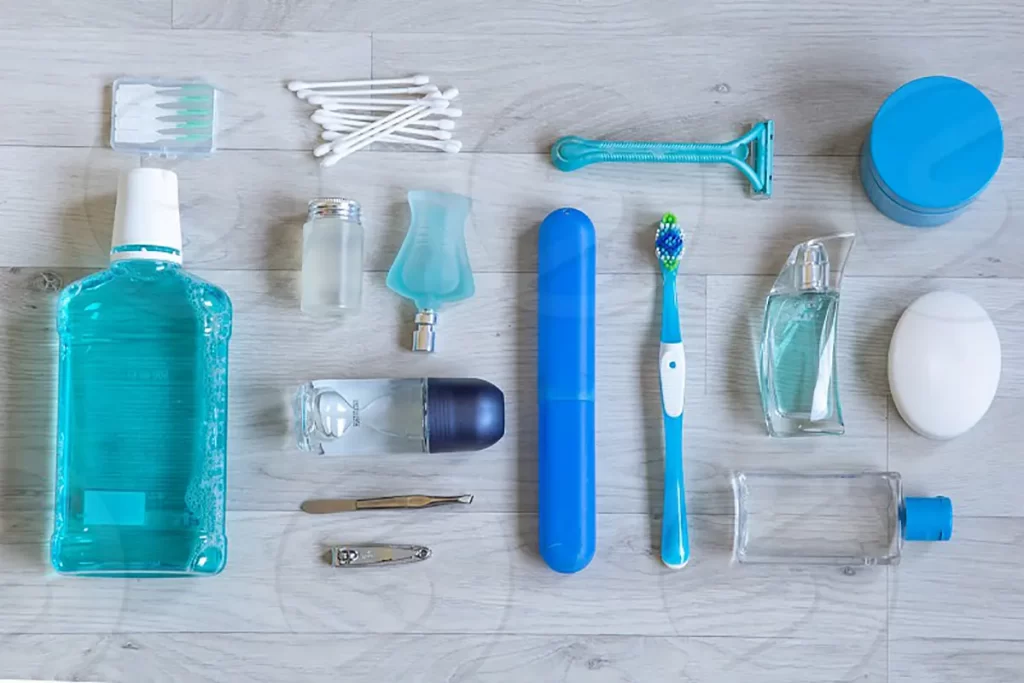
At this point, you might be wondering: Why is hygiene important in a survival kit?
When you’re in survival mode, you’d want to prevent more problems from arising. This includes avoiding the spread of diseases and illnesses.
When building your emergency kit, limit your list to the things you’ll actually need. At this point, you won’t be needing products for a 10-step skincare routine. In fact, having toilet paper can be considered a luxury when you’re in survival mode.
So, what can you include in your budget doomsday prep?
- Soap
- Toilet paper
- Toothpaste and toothbrush
- Hand sanitizer
- Shampoo
- Sanitary pads
- Towels
If you or another family member use other hygiene products, go ahead and add them to your list. Just make sure that they are items you know you use frequently. Adding something you rarely use will just be a waste of money.
Medications
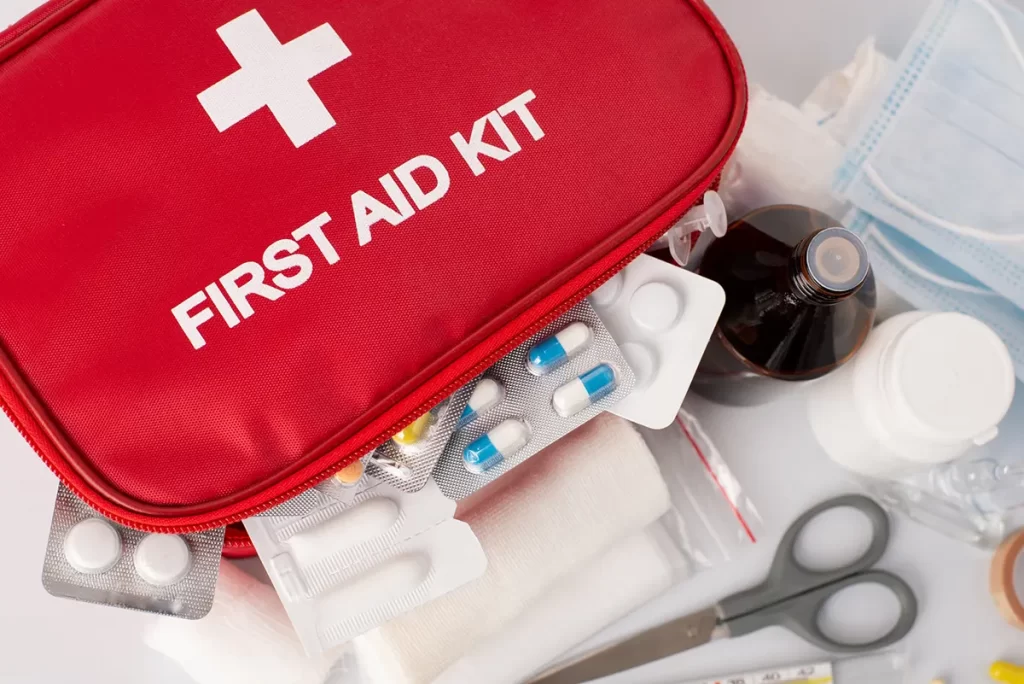
Your doomsday prepping list and first aid kit should include both prescription and over-the-counter medications. Remember, when you’re in the middle of a disaster or emergency, it’s hard to tell which stores will remain open to sell medical supplies. If you are taking any prescription drugs, you wouldn’t want to be without them since they can help keep you in the best health possible.
For OTC meds, consider including the following medications:
- Anti-histamines
- Pain relievers
- Anti-emetics
- Allergy medications
- Anti-diarrheal
- Antibiotic ointments
- Anti-fungal
Emergency Supplies
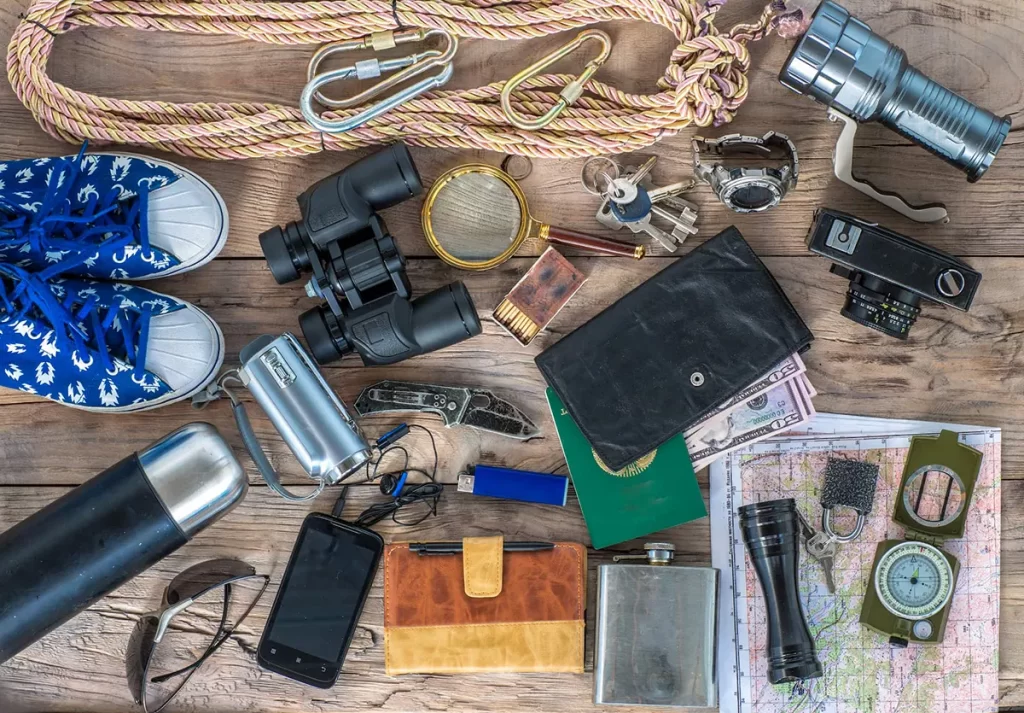
As the name implies, these are items you’re likely to use only in emergency situations. Whether it’s a man-made or natural disaster, you should have the following survival items ready:
- Candles
- Duct tape
- Can opener
- Gauze pads
- Rubbing alcohol
- Antiseptic spray
- Compass
- Flashlight
- Rope
- Batteries
- Lighters
- Knife
While you can buy these things separately, you have the option to buy emergency survival kits. Generally, these kits already come with the essential items you’ll need to survive. Just make sure to pick one with the lowest price that doesn’t compromise quality.
Build Small Habits
Since you are prepping on a budget, you can’t buy everything you’ll need in just one go. So instead of stressing yourself out, it’s good to prepare slowly but surely.
For example, you can start by buying around three canned goods at a time. You can even start with one canned food and buy another a week or two later. You can also fill your first aid kits the same way.
For your water, try to keep your storage full all the time. The same goes for your car’s gas. Make sure that the level never goes below 1/2 of your tank. These simple habits can make a huge difference when a disaster happens.
If your financial situation permits, you can buy your supplies in bulk or in several packs to save money. It can lower the total cost you have to pay. And since you won’t have to go to your local grocery stores frequently, it’ll help save time too.
This is a handy tip for those who are prepping on a budget with family or group of friends.
If that’s not the case, then you can look out for great deals so you can spend less on your supplies. There are stores that offer discounts and promos once in a while.
Learn Basic Survival Skills
The items you prepare can only help you to a certain extent. If you want to survive, you need to have the necessary skills.
For one, you need to know how to start a fire. It’s one way to make sure that you’ll be able to cook, boil water, and keep yourself warm.
You should also learn how to fish or hunt, so you won’t run out of food to eat. You can even start a garden in your yard and learn how to preserve food. Remember, nutrition is important when you’re in survival mode.
Building a shelter is another skill you should include in your list. There are situations that may force you to bug out and leave your home. If you know how to build a shelter, you won’t have to worry about where you’ll stay while waiting for everything to go back to normal.
Don’t forget about self-defense as well. You need to know how to protect yourself since everything can be chaotic during emergencies and disasters.
To test and practice your survival skills, you can try camping and see how it works.
Always Update
Don’t be afraid to update your plan and supplies as you see fit. Situations change, and you should be able to adapt to such changes if you want to survive.
Recheck the items you’ve prepared and see which areas you can still improve. Go through your list and see if there’s anything else you can add. You can get more bottled water or first aid supplies if that’s what the current situation dictates.
See your first aid kit and look at the medicines you have there. Make sure that there are no expired medications. You should also check your survival food items regularly to ensure that there are no expired items.
Stay In Shape
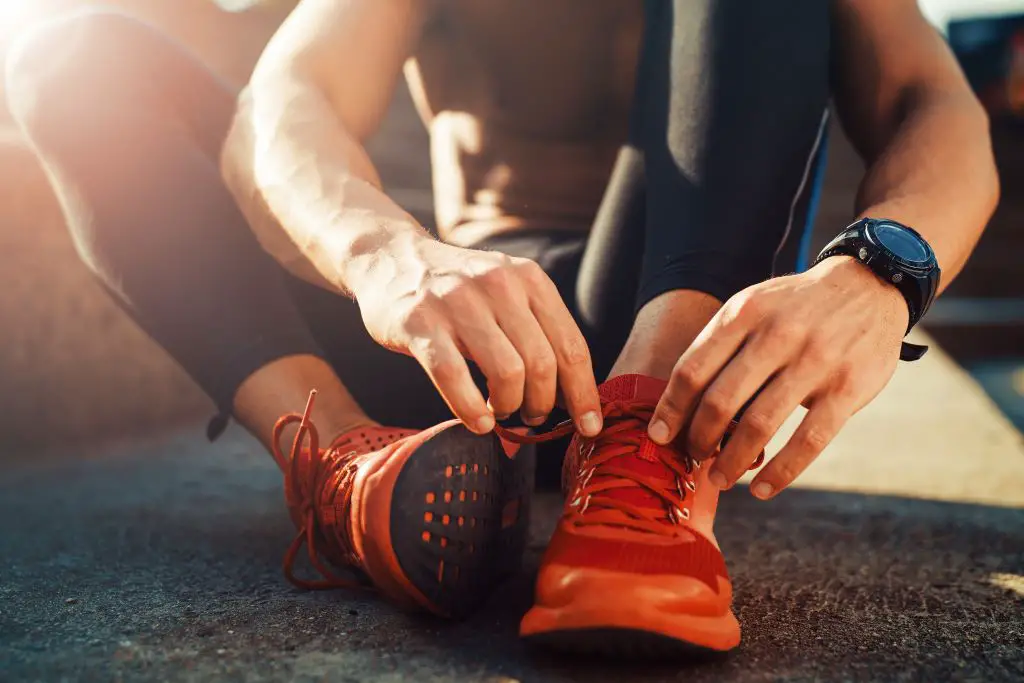
In addition to building your emergency supply kit, you should also look after your health. Getting in shape allows you to live a long and healthy life. Plus, it’ll help you survive during disasters and emergencies.
There are several ways to improve yourself even with a tight budget. To start, you can try working out for about 30 minutes a day at home. There are tons of exercise videos online you can follow for free. You don’t necessarily have to enroll in a gym class for this.
In Conclusion
Having a limited budget is no excuse to not be prepared for whatever disaster or emergency that may happen in the future. To start prepping on a budget, you need to start with a plan.
Once you have a budget plan, you can start creating a list of prepping items you need based on what your priorities are. It doesn’t matter if you buy stuff from thrift stores or your local grocery stores. As long as you know that the items are safe and healthy to consume, you shouldn’t have problems adding them to your kit.
